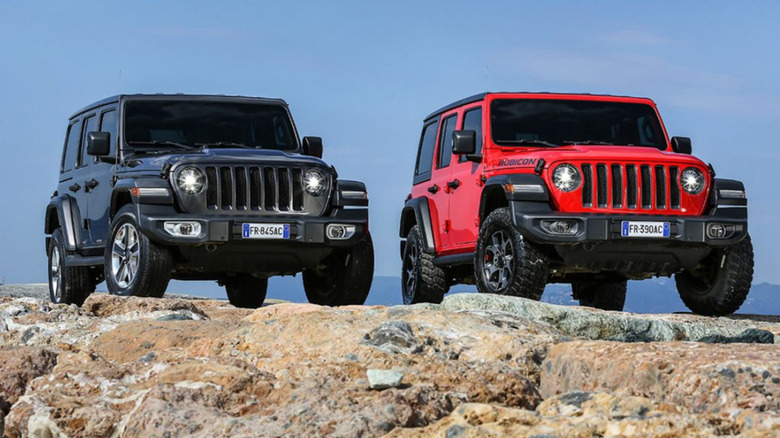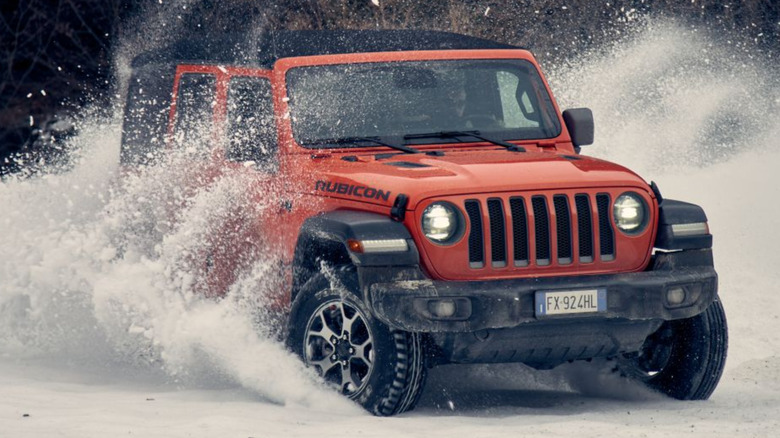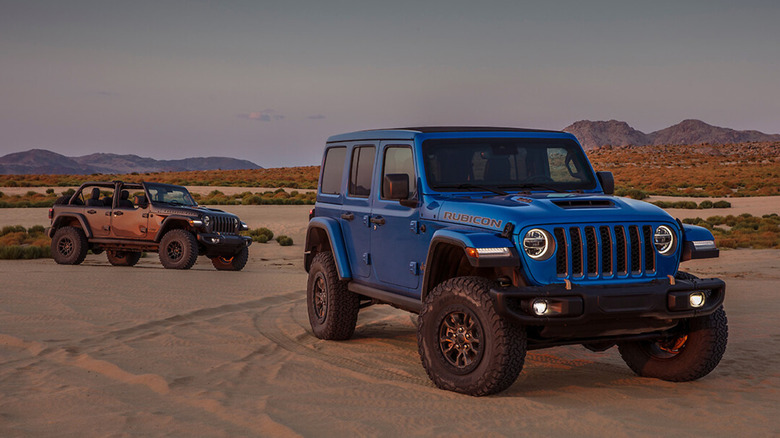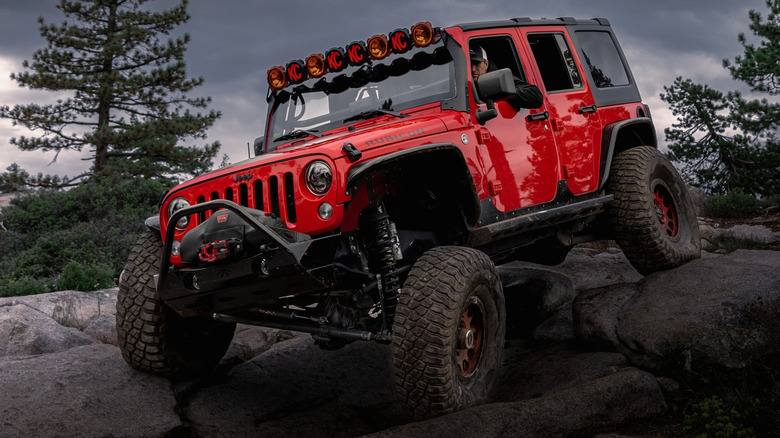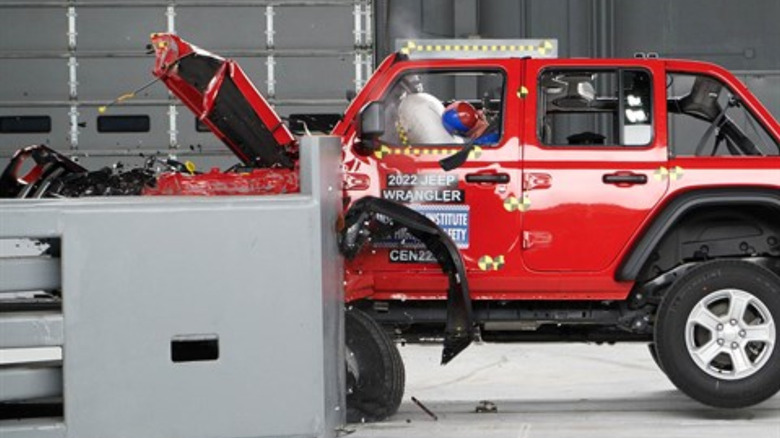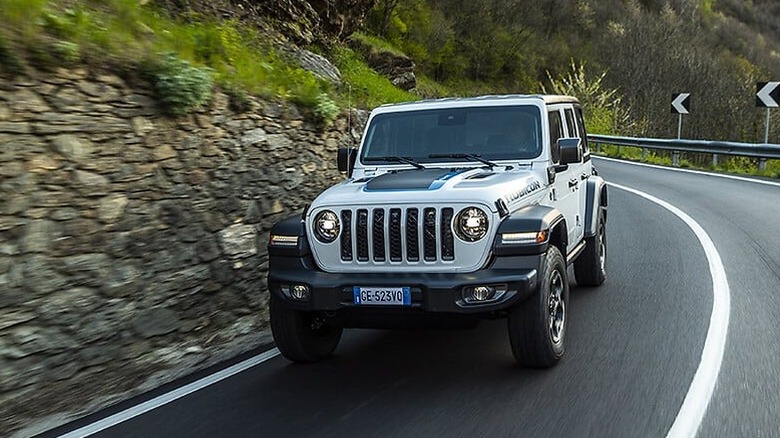The Biggest Benefits (And Downsides) Of Owning A Jeep Wrangler
The Jeep Wrangler is one of the most iconic vehicles in American history and has a massive fan following as well, mainly due to its off-road prowess. The Wrangler debuted in 1987 and there have been four generations of it since. The earliest versions were called the YJ, followed by TJ, then came the JK, and we are currently on the JL generation of the vehicle.
The JL was launched in 2018 and since then there have been quite a few updates done to the models in terms of features and drivetrains, but it has stayed true to its roots. It is still a hardcore off-roader which is extremely capable. In 2025, you can choose between seven variants for the regular Wrangler and there are seven variants for the 4xe models as well.
There are two-door versions and models which are much suited for the road, while there are some which are built to go rock-crawling right out of the showroom floor. That being said, just like every other car, the Wrangler is great at some things, but it also has its downsides. If you are looking into buying one, we can tell you all the benefits and all the compromises you'd have to make as well.
The Wrangler is an off-road legend
The Jeep Wrangler is built for a purpose, and that purpose is going off-road. All variants of the Wrangler are equipped with a proper 4wd system with low-range. The wheels have been placed at all four corners of the vehicle to ensure optimum approach, departure, and break-over angle while tackling the toughest of terrains. They all come with a trail-rated badge as well, which is a certification that Jeep does on one of the toughest trails around the USA. All Jeeps with this badge have cleared these trails.
Spec it right, and you can have 35-inch tires from the factory, front and rear lockers, and sway bar disconnect to offer maximum articulation. It also gets solid axles front and back which means that there is, again, a lot of articulation and the wheels stay on the ground for maximum traction. This is one of the reasons that the Wrangler is the go-to choice for people who want to go rock crawling. The Rubicon is the top of the line off-road trim level and comes with all the off-road goodies. But because it is so good off-road, it does not fare well on the road.
There is a Wrangler for everyone but it is expensive
The Wrangler has been on sale for a long time. With so many in production, there is a Wrangler for everyone. You can find lots of them in the used market, and the early YJ and TJ models can be had under $10,000 pretty easily. At one point, Jeep also offered a diesel engine in the Wrangler and if you want to buy a new one, Jeep gives you a lot of options there as well. There are various engine options and trim levels to choose from.
While the Jeep Wrangler might look like a bare-bones machine, it is not exactly the most affordable vehicle on the market. While the base MSRP of the Sport trim of the regular Wrangler is $32,690, the costs can quickly add up once you start to add a couple of options and get even the mid-level trim. The 4xe starts from $50,695 which is not exactly a bargain. The Wrangler Rubicon trim levels which are known for their off-road prowess are even more expensive and the top of the line Wrangler Rubicon 392 breaches the $100,000 mark.
The Wrangler had no competition whatsoever at one point, but manufacturers have slowly invaded this segment, looking at how these off-road focused SUVs have become so incredibly popular. Ford launched the Bronco — with SlashGear reviewing the 2025 Bronco Sport — which has the same ethos and in some ways is better. That also comes in either two-door and four-door form and is a direct competitor to the Wrangler. The Bronco Raptor R is the most extreme version of the Ford and is similarly capable and in some ways is better than the Wrangler because it is a much more modern vehicle.
Lots of aftermarket support
The Jeep Wrangler is so incredibly popular that the amount of modifications that you can do to it are endless. Jeep itself offers a host of accessories which you can get fitted to your vehicle directly from the dealer. Jeep knows that Wrangler owners like to modify their cars and go off-road so they offer a range of parts like various kinds of tops, a metal bumper, a winch, a snorkel, heavy-duty rock sliders, an air compressor, and even different mirrors for when you want to take off your doors.
The aftermarket is even more extensive. You can lift your Wrangler up with various suspension systems, have endless wheel and tire options, a lot of metal bar work is available, auxiliary lights, and even complete kits to swap another engine into it. For those who want more power, they can look at supercharger kits and engine tunes as well. There are various Jeep specific parts as well, which are made while keeping the Wrangler's unique design in perspective. You can get extra fuel cans which can fit right behind your spare wheel, and there are audio systems which are especially made for the Wrangler as well.
The mod list is endless and one can really go to great lengths to make their Wrangler unique and suited to their own use case. People use these cars for overlanding and sometimes even extreme rock crawling and with such an extensive aftermarket, you can truly make it your own. The customizability options available with the Wrangler alone is a reason for people to be drawn to it.
Poor safety and reliability
The Wrangler again compromises on some key aspects due to its off-road focused nature. Even the latest generation of the Wrangler scored poorly on IIHS crash tests. On small overlap frontal and side impact tests, it scored "marginal" while in moderate overlap frontal test it scored "poor". Even the headlights were rated "poor" for the lower trim levels and were only "marginal" on the top trims with the LEDs and high-beam assist.
Even in terms of reliability, the Wrangler is a hit or miss. The Pentastar V6 has had its problems over the years and the latest and greatest, the 4xe models can go up in flames and Chrysler issued a massive recall last year. The diesel models were also recalled for a fix to the high pressure fuel pump. The 2.0L turbo and the V8 are relatively reliable engines but the Jeep Wrangler scored a 3.5 out of five in RepairPal reliability rating. The Jeep Wrangler was 25th out of 26 cars on the rankings.
The Wrangler struggles on-road
While all the off-road goodies make the Wrangler a highly capable machine when the going gets tough, it also creates lots of compromises on the road. The Wrangler's first job is to excel at off-road stuff so people who buy these cars already know what they are getting into. So all the things that make it good on the trails inherently make it worse to drive on paved roads.
The boxy shape which is so iconic is definitely not winning any prizes for being the most aerodynamic. There is a lot of wind noise and the big knobby tires create a lot of road noise. Coming to the solid axles, while they are brilliant in getting grip off-road, since both the sides of the axle are affected from the other, it causes the suspension to react to every bump and imperfection on the road. This is pretty bad for the ride quality of the vehicle, and the Wrangler has a significantly busier ride than a counterpart unibody SUV with independent suspension all round. The solid axles also mean that the Wrangler has a very vague steering wheel response.
